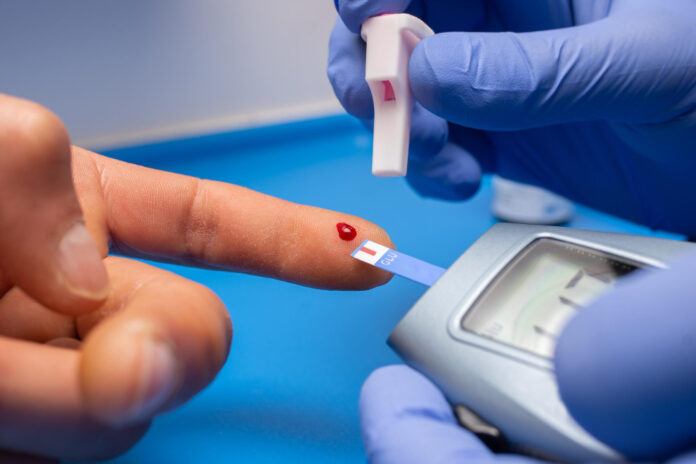Type 2 diabetes management is a journey that involves balancing blood sugar levels, nurturing your body with wholesome foods, and making sustainable lifestyle changes. One approach that has garnered significant attention is using low glycemic index (GI) meal plans. These meal plans prioritize foods that cause a slower, steadier rise in blood sugar levels, helping you maintain energy, reduce spikes, and support overall metabolic health.
In this in-depth guide, we’ll explore what a low glycemic index meal plan entails, how it benefits those managing type 2 diabetes, and practical ways to incorporate it into your daily routine. With tips, real-life stories, scientific evidence, and actionable recipes, this guide is designed to empower you to take charge of your health with confidence and clarity.
Understanding the Glycemic Index
What Is the Glycemic Index?
The glycemic index (GI) is a ranking system for carbohydrates based on how quickly and how much they raise blood sugar levels after eating. Foods are scored on a scale from 0 to 100, with lower values indicating a slower, more gradual increase in blood sugar. Generally:
- Low GI foods (55 or less): These include many vegetables, legumes, whole grains, and most fruits.
- Medium GI foods (56-69): Some whole wheat products and starchy vegetables.
- High GI foods (70 and above): Foods like white bread, sugary cereals, and certain processed snacks.
By choosing low GI foods, you can help regulate blood sugar levels—a crucial component for type 2 diabetes management.
Why Focus on Low GI for Type 2 Diabetes?
For individuals managing type 2 diabetes, controlling blood sugar spikes is essential. High GI foods can cause rapid increases in blood sugar, triggering insulin responses that may lead to energy crashes, hunger, and long-term complications. A low glycemic index meal plan can:
- Stabilize blood sugar levels: Preventing the sharp peaks and valleys that can strain the body.
- Improve satiety: Low GI foods keep you feeling full longer, aiding in weight management.
- Enhance energy levels: Consistent blood sugar levels can translate to more stable energy throughout the day.
- Support cardiovascular health: Many low GI foods are rich in fiber, antioxidants, and essential nutrients that benefit heart health.
According to research published in the American Journal of Clinical Nutrition, low GI diets have been associated with improved glycemic control and lower cholesterol levels, highlighting their importance for people with diabetes (AJCN Study).
The Building Blocks of a Low GI Meal Plan
Emphasizing Whole, Unprocessed Foods
A key element of low GI meal planning is choosing whole, minimally processed foods. These foods are naturally rich in fiber, vitamins, and minerals. Here’s what you should focus on:
- Vegetables: Leafy greens, broccoli, bell peppers, and other non-starchy vegetables.
- Fruits: Berries, apples, pears, and citrus fruits tend to have lower GI values.
- Legumes: Beans, lentils, and chickpeas are excellent sources of protein and fiber.
- Whole Grains: Brown rice, quinoa, barley, and oats are better choices than refined grains.
- Nuts and Seeds: Almonds, walnuts, chia seeds, and flaxseeds provide healthy fats and protein.
Balancing Macronutrients
A balanced meal isn’t just about carbohydrates—it’s about pairing them with proteins and healthy fats to further moderate blood sugar responses. For example:
- Protein: Lean sources such as tofu, tempeh, beans, and legumes.
- Healthy Fats: Avocado, olive oil, nuts, and seeds.
- Fiber: High-fiber foods slow digestion, which helps in maintaining a steady blood sugar level.
The Role of Portion Control
Even low GI foods can raise blood sugar if consumed in large quantities. Moderation is key. Working with a nutritionist or using meal planning apps can help you tailor portion sizes to your individual needs.
Crafting Your Low Glycemic Index Meal Plan
Designing a meal plan that aligns with your taste preferences and lifestyle is essential for long-term success. Below, we outline strategies to build a low GI meal plan that supports type 2 diabetes management.
1. Start with a Healthy Breakfast
Breakfast sets the tone for your day. Opt for low GI options to ensure a gradual release of energy.
Breakfast Ideas:
- Overnight Oats: Combine rolled oats, chia seeds, almond milk, and a handful of berries. Let it sit overnight, then top with a sprinkle of nuts in the morning.
- Vegetable Omelette: Use non-starchy vegetables like spinach, tomatoes, and bell peppers. Pair with a slice of whole-grain toast.
- Smoothie Bowl: Blend low GI fruits like berries with a scoop of protein powder, a tablespoon of flaxseeds, and unsweetened almond milk. Top with sliced kiwi and a few nuts.
2. Plan a Balanced Lunch
Lunch is a critical meal for maintaining energy levels throughout the afternoon.
Lunch Ideas:
- Quinoa Salad: Mix quinoa with chopped cucumbers, cherry tomatoes, red onion, and a handful of spinach. Add a source of lean protein such as grilled tofu or chickpeas, and dress with olive oil and lemon juice.
- Lentil Soup: A hearty lentil soup with carrots, celery, and tomatoes is not only filling but also rich in fiber and protein.
- Stuffed Bell Peppers: Fill bell peppers with a mixture of brown rice, black beans, corn, and diced tomatoes. Bake until tender and serve with a side salad.
3. Satisfying Snacks to Keep You on Track
Healthy snacks can prevent overeating during meals and keep your blood sugar stable.
Snack Ideas:
- Veggie Sticks with Hummus: Carrot, celery, and bell pepper sticks dipped in homemade or store-bought hummus.
- Apple Slices with Nut Butter: A crisp apple paired with almond or peanut butter provides a satisfying crunch and protein boost.
- Mixed Nuts: A small handful of unsalted almonds, walnuts, and pistachios.
- Greek Yogurt with Berries: Opt for unsweetened Greek yogurt topped with a few blueberries or raspberries.
4. Dinner: A Nutritious and Delicious Finale
Dinner is an opportunity to wind down the day with a balanced meal that promotes recovery and relaxation.
Dinner Ideas:
- Baked Salmon with Steamed Vegetables: Salmon is rich in omega-3 fatty acids, which support heart health. Serve with steamed broccoli, cauliflower, and carrots.
- Vegetable Stir-Fry: Sauté a colorful mix of vegetables (like snap peas, bell peppers, and mushrooms) in olive oil, add tofu or tempeh for protein, and serve over a small portion of brown rice.
- Eggplant Parmesan: Use a baked, breaded eggplant slice topped with marinara sauce and a sprinkle of low-fat cheese, served with a side of whole wheat pasta or a leafy green salad.
5. Sweet Treats with a Low GI Twist
Cravings for something sweet can be managed by choosing desserts with a lower glycemic impact.
Dessert Ideas:
- Chia Pudding: Mix chia seeds with unsweetened almond milk and a touch of vanilla extract. Allow it to set overnight and top with fresh berries.
- Fruit Salad: A mix of low GI fruits like kiwi, oranges, and strawberries drizzled with a bit of honey and a squeeze of lemon juice.
- Dark Chocolate: Enjoy a small piece of dark chocolate (70% cocoa or higher) which has a lower glycemic impact compared to milk chocolate.
Building a Weekly Low GI Meal Plan
Creating a weekly meal plan can help you stay organized and reduce the stress of last-minute meal decisions. Here’s an example of a weekly plan designed for type 2 diabetes management:
Sample Weekly Meal Plan
Monday:
- Breakfast: Overnight oats with chia seeds and blueberries.
- Snack: Apple slices with almond butter.
- Lunch: Quinoa salad with spinach, cherry tomatoes, and grilled tofu.
- Snack: Carrot sticks with hummus.
- Dinner: Lentil soup with a side of mixed greens.
Tuesday:
- Breakfast: Vegetable omelette with whole-grain toast.
- Snack: Greek yogurt with raspberries.
- Lunch: Stuffed bell peppers with brown rice and black beans.
- Snack: A small handful of mixed nuts.
- Dinner: Baked salmon with steamed broccoli and cauliflower.
Wednesday:
- Breakfast: Smoothie bowl with berries, protein powder, and flaxseeds.
- Snack: Veggie sticks with hummus.
- Lunch: Lentil soup with a side salad.
- Snack: An orange.
- Dinner: Vegetable stir-fry with tofu served over brown rice.
Thursday:
- Breakfast: Overnight oats with almond milk and kiwi slices.
- Snack: Apple slices with nut butter.
- Lunch: Quinoa salad with chickpeas, cucumbers, and red onion.
- Snack: Greek yogurt with blueberries.
- Dinner: Eggplant Parmesan with a side of whole wheat pasta.
Friday:
- Breakfast: Vegetable omelette with spinach and tomatoes.
- Snack: Mixed nuts.
- Lunch: Lentil soup with a mixed greens salad.
- Snack: A small bowl of berries.
- Dinner: Baked tofu with steamed vegetables and quinoa.
Saturday:
- Breakfast: Smoothie bowl with spinach, berries, and chia seeds.
- Snack: Carrot sticks with hummus.
- Lunch: Stuffed bell peppers with brown rice and black beans.
- Snack: Apple slices with almond butter.
- Dinner: Vegetable stir-fry with tempeh served over brown rice.
Sunday:
- Breakfast: Overnight oats with mixed berries and flaxseeds.
- Snack: Greek yogurt with raspberries.
- Lunch: Quinoa salad with mixed vegetables and grilled tofu.
- Snack: Mixed nuts.
- Dinner: Baked salmon with a side of steamed broccoli and a leafy green salad.
This sample plan not only incorporates a variety of low GI foods but also ensures a balance of macronutrients and flavors to keep your meals exciting and nutritious.
Practical Tips for Success
Adopting a low glycemic index meal plan for type 2 diabetes management is a process that involves experimentation, learning, and gradual adjustments. Here are some practical tips to help you along the way:
Plan Ahead
- Meal Prep: Dedicate a few hours each week to preparing meals and snacks. Pre-cut vegetables, batch-cook grains and legumes, and portion out snacks to make healthy choices convenient.
- Grocery List: Keep a running list of low GI foods to stock up on. Fresh produce, whole grains, legumes, and lean proteins should be staples in your pantry.
Stay Hydrated
Water plays a critical role in digestion and overall metabolic health. Aim to drink at least 8-10 cups of water per day, and consider herbal teas as a flavorful alternative.
Monitor Your Blood Sugar
Keeping track of your blood sugar levels helps you understand how different foods affect your body. Use a glucometer or a continuous glucose monitoring system, and consult with your healthcare provider to adjust your meal plan as needed.
Be Flexible
Remember that every body is unique. What works for one person may not work for another. Experiment with different foods, recipes, and timing to find the low GI meal plan that best suits your lifestyle and preferences.
Get Support
Joining a community—whether in person or online—can provide motivation, recipe ideas, and emotional support. Consider connecting with groups focused on diabetes management or low GI eating for shared experiences and encouragement.
Scientific Evidence and Resources
Scientific research has consistently supported the benefits of low glycemic index diets for type 2 diabetes management. A meta-analysis published in the British Journal of Nutrition found that low GI diets can improve glycemic control and reduce the risk of cardiovascular disease (British Journal of Nutrition). Furthermore, resources from reputable organizations like the American Diabetes Association offer comprehensive guidelines and meal planning advice that align with low GI principles.
For those interested in diving deeper into the science, exploring studies on PubMed and Google Scholar using keywords like “low glycemic index meal plans” and “type 2 diabetes management” can yield a wealth of peer-reviewed research and clinical trials.
Real-Life Success Stories
Maria’s Journey to Better Health
Maria, a 52-year-old teacher, was diagnosed with type 2 diabetes five years ago. She struggled with fluctuating blood sugar levels and fatigue despite following traditional dietary advice. After working with a nutritionist, Maria shifted her focus to a low GI meal plan. By incorporating whole grains, legumes, and an abundance of non-starchy vegetables into her diet, Maria experienced more stable blood sugar readings and improved energy. “It wasn’t just about cutting out sugars,” she says, “it was about choosing foods that sustained me throughout the day.”
James’ Transformation Through Low GI Living
James, a 47-year-old software engineer, had always been skeptical of strict diets. However, after his doctor warned him about the potential complications of his poorly managed diabetes, he decided to give the low glycemic index approach a try. He began preparing weekly meal plans, experimenting with recipes like quinoa salads and lentil soups, and noticed a marked improvement in his blood sugar control. “I never imagined that simple, natural foods could have such a profound impact on my health,” James reflects. His experience serves as a reminder that sometimes, the best solutions are found in nature’s pantry.
Conclusion: Embracing a Low GI Lifestyle for Type 2 Diabetes Management
Managing type 2 diabetes is a lifelong commitment to self-care and well-being. By adopting a low glycemic index meal plan, you’re not only making a choice that supports balanced blood sugar levels but also investing in your overall health. From the science-backed benefits to the flavorful, diverse meal options available, this approach empowers you to take control of your nutrition naturally.
Remember, the journey toward better health is a marathon, not a sprint. Embrace the process, experiment with recipes, and celebrate every small victory along the way. Whether you’re an experienced cook or just starting to explore new dietary habits, low GI meal plans offer a flexible, sustainable way to nourish your body and manage type 2 diabetes effectively.
Are you ready to transform your plate and your health? Start by planning your meals around whole, unprocessed foods, balance your macronutrients, and enjoy the journey to a more vibrant, energetic life.
For additional insights and recipes, explore our related articles on healthy eating and diabetes-friendly recipes, and consider joining our community for ongoing support and inspiration. Your path to better health begins with one mindful meal at a time.
Disclaimer
This article is intended for informational purposes only and does not constitute medical advice. Always consult with your healthcare provider before making any changes to your diet or exercise routine, especially if you have a medical condition such as type 2 diabetes.
































